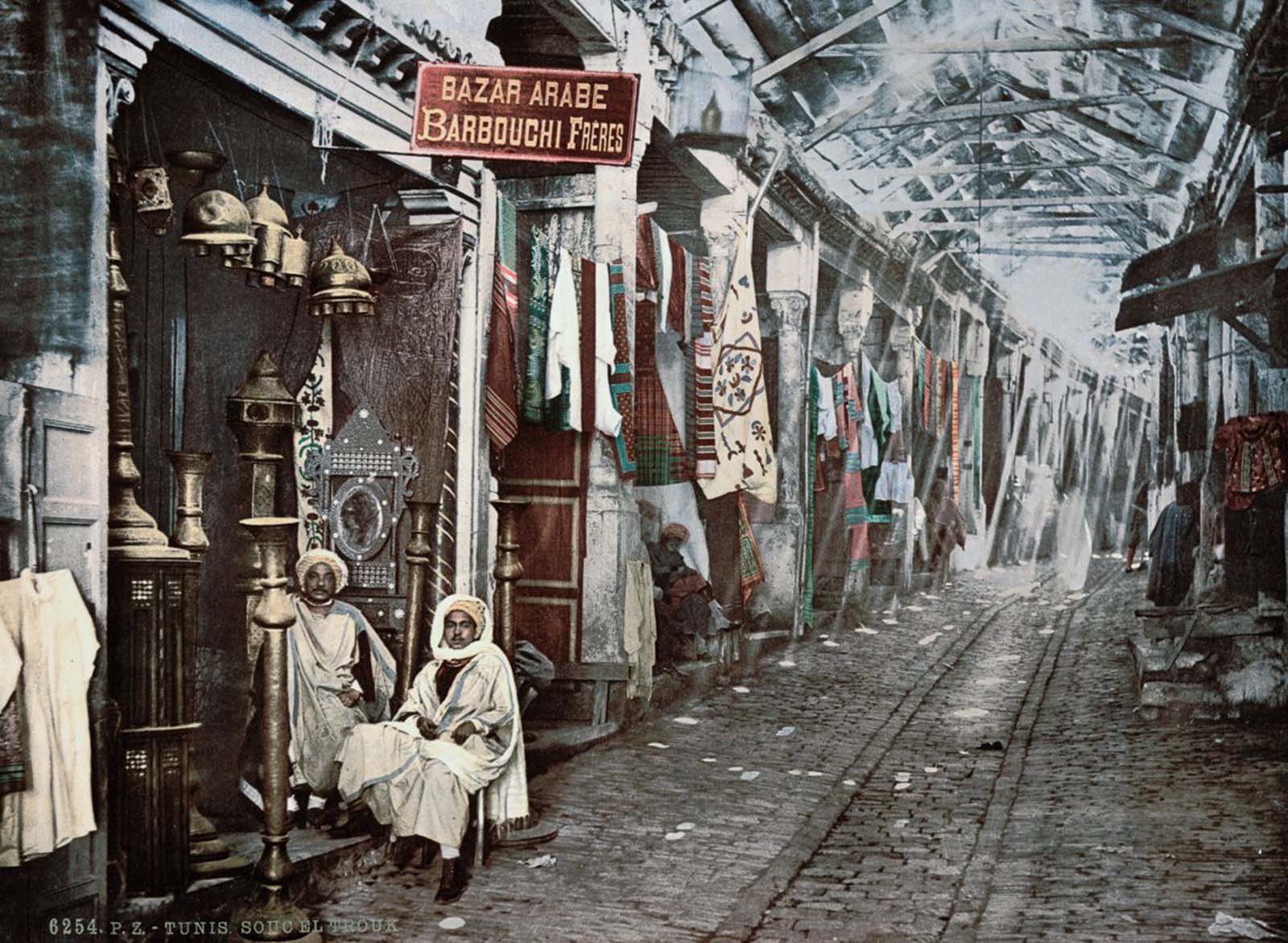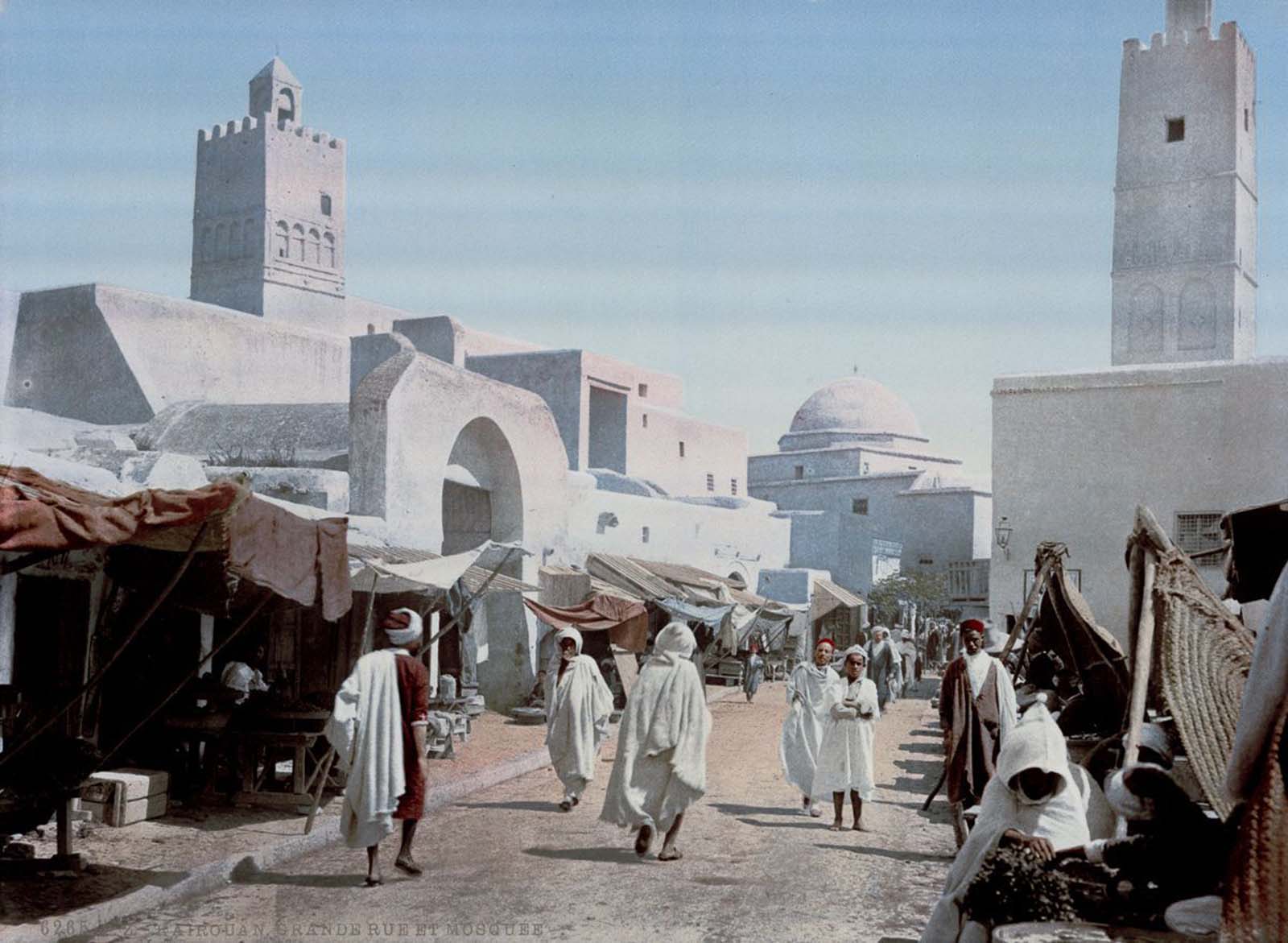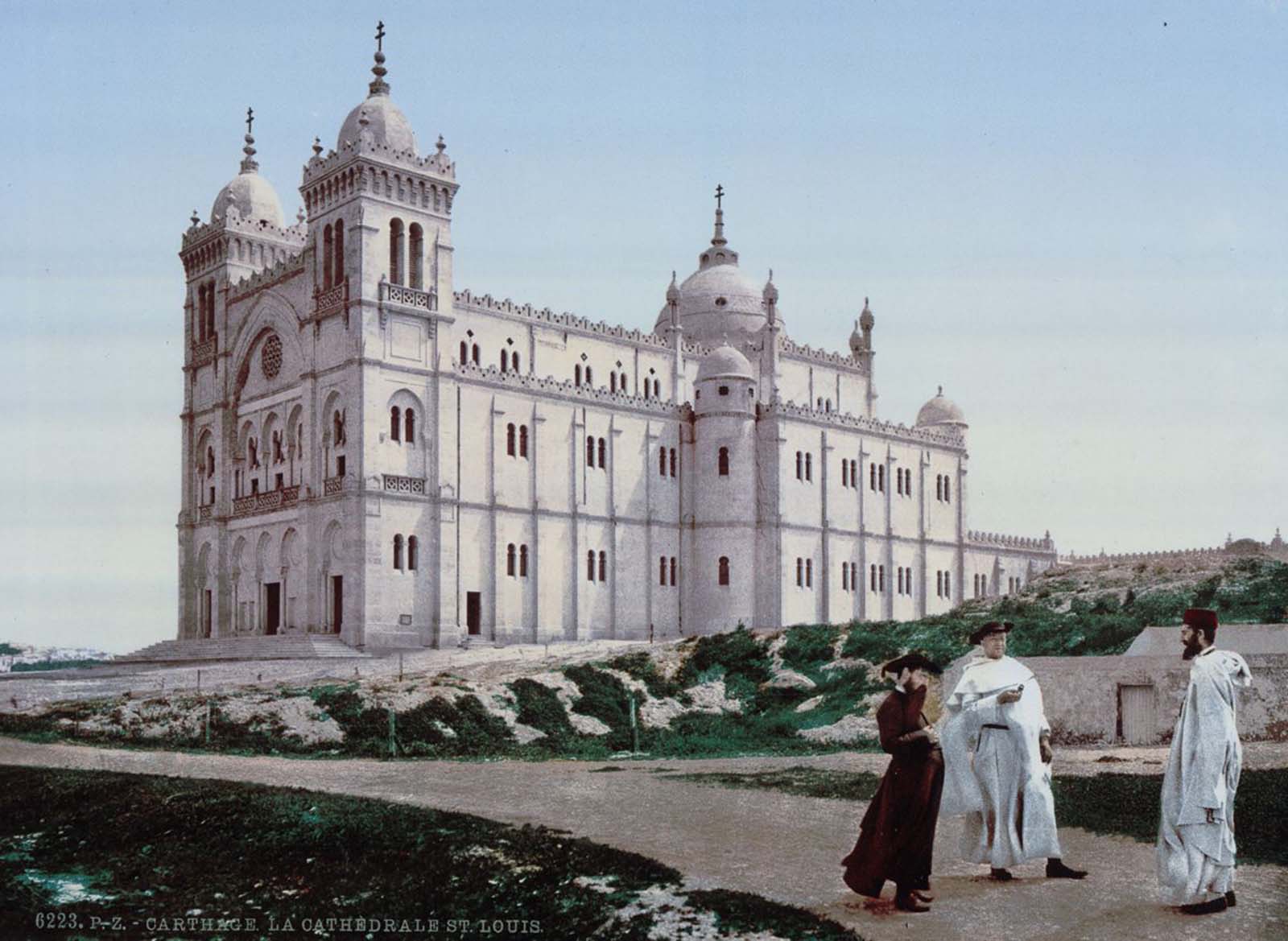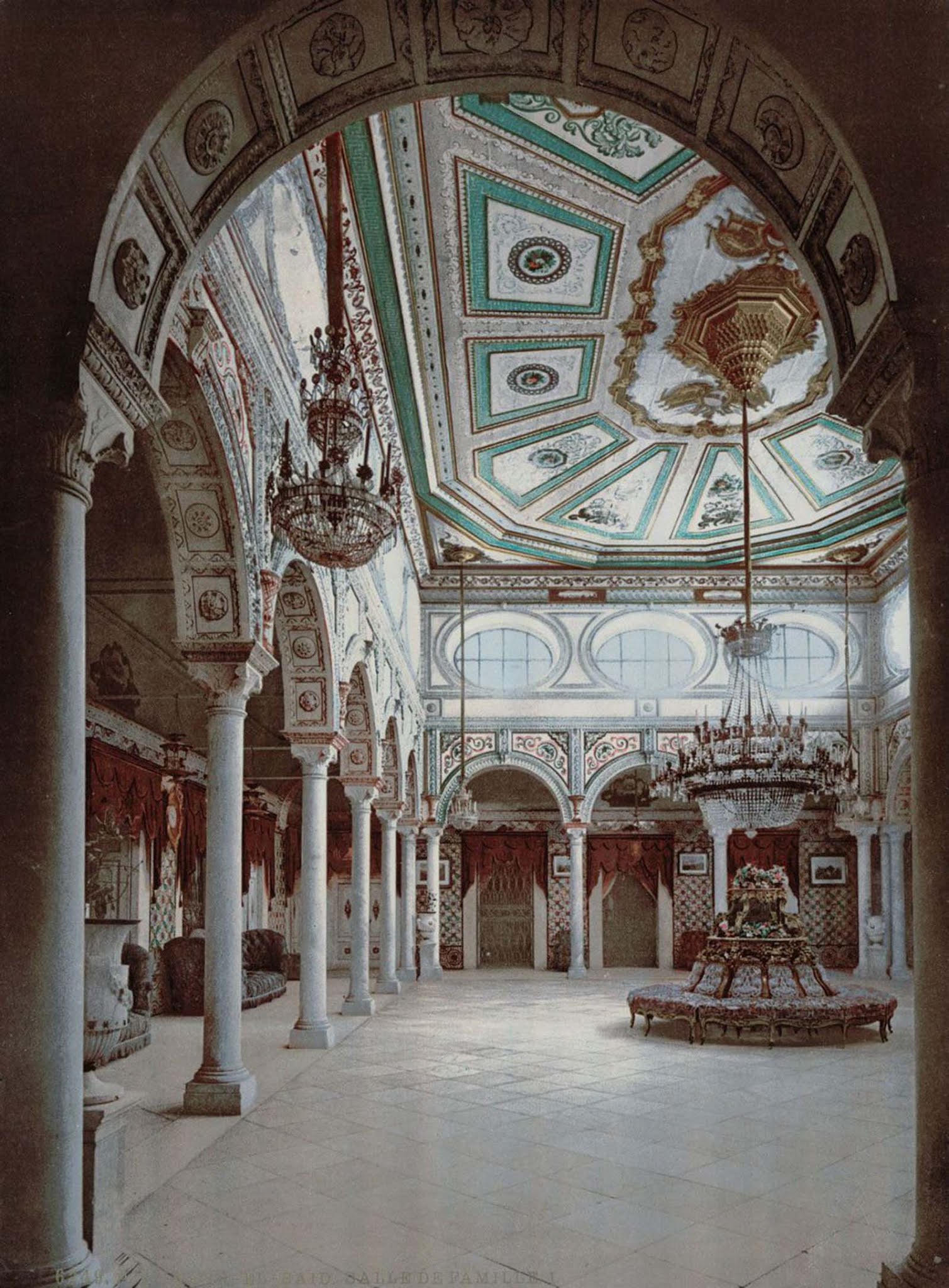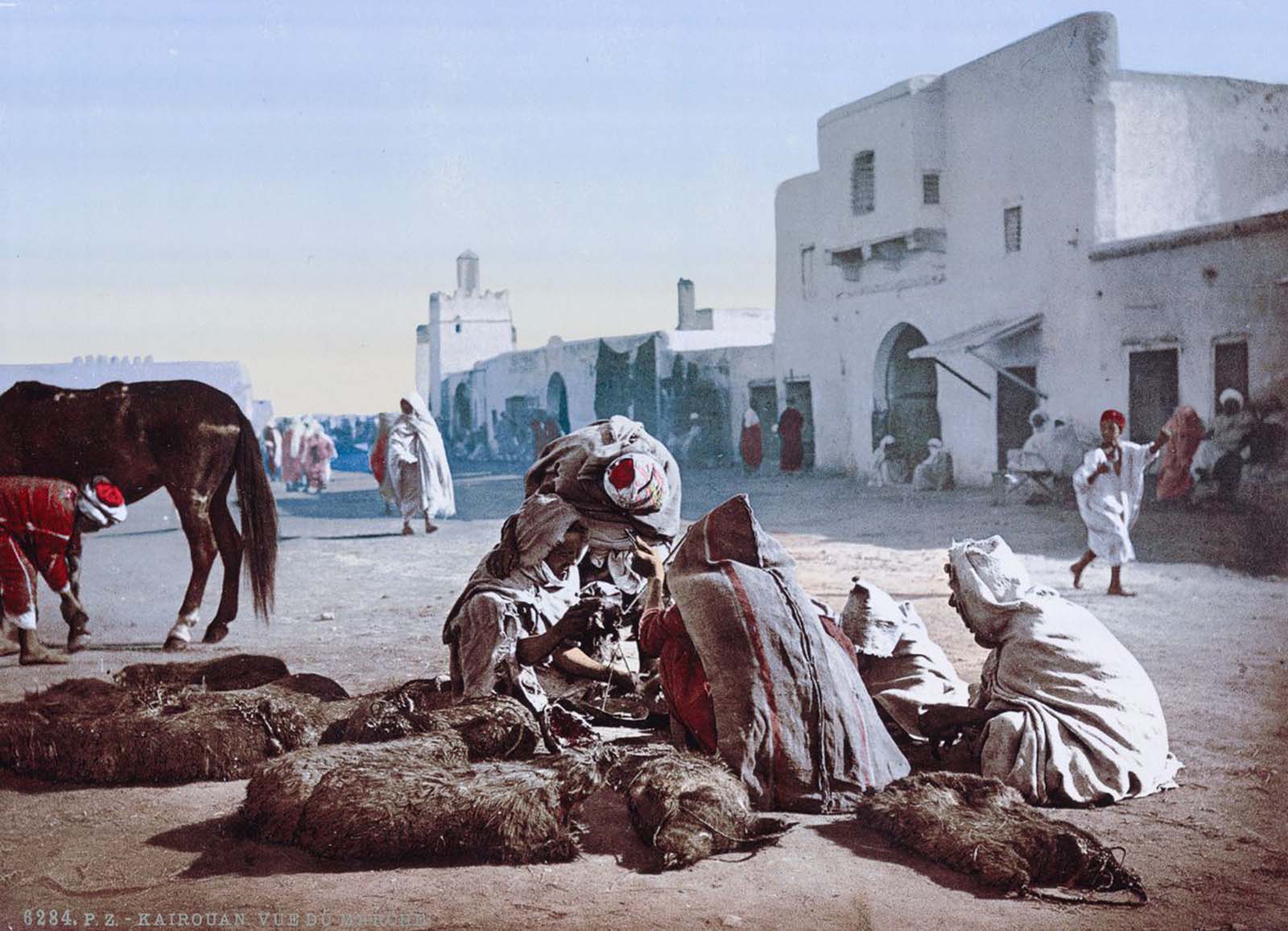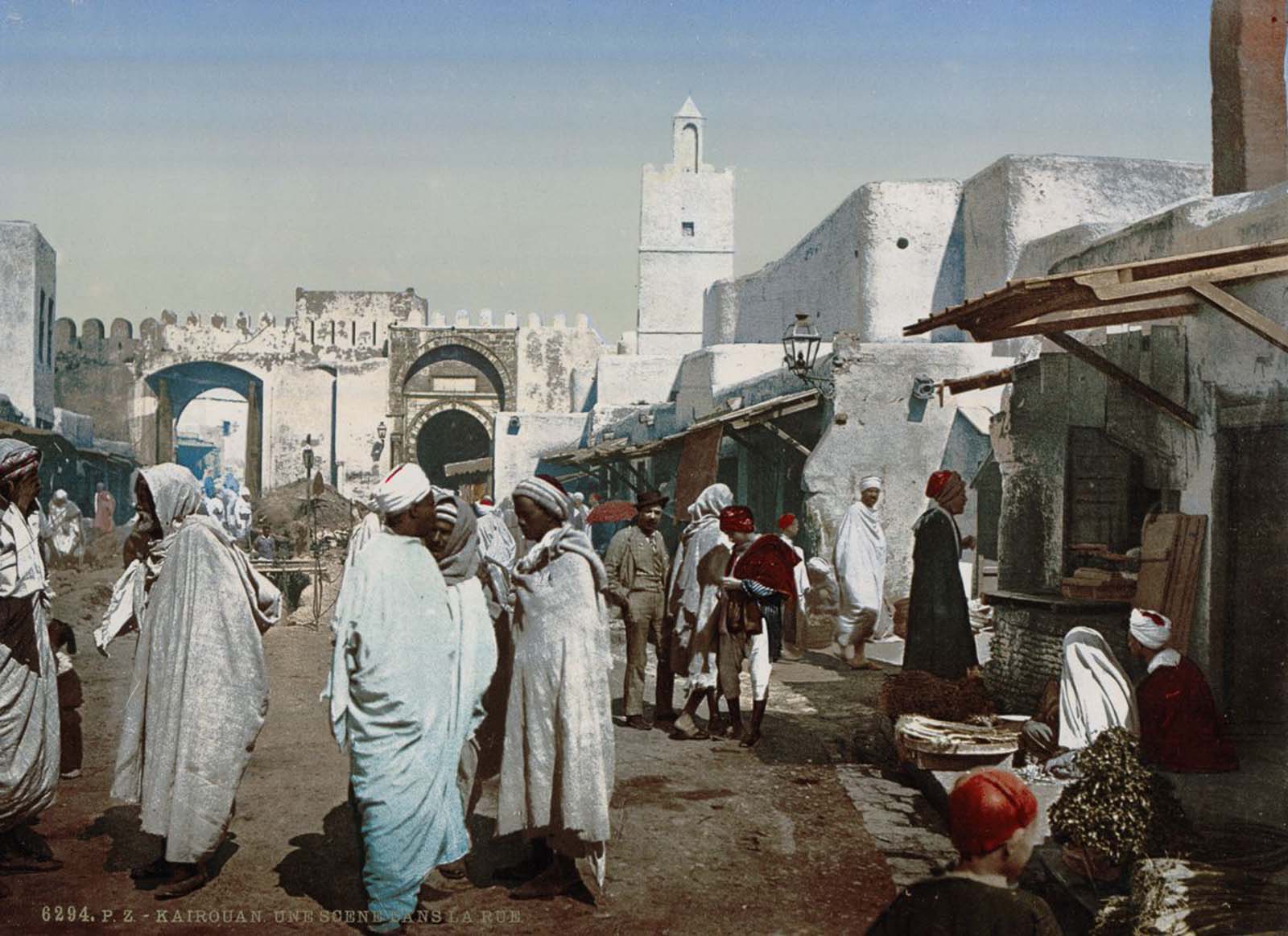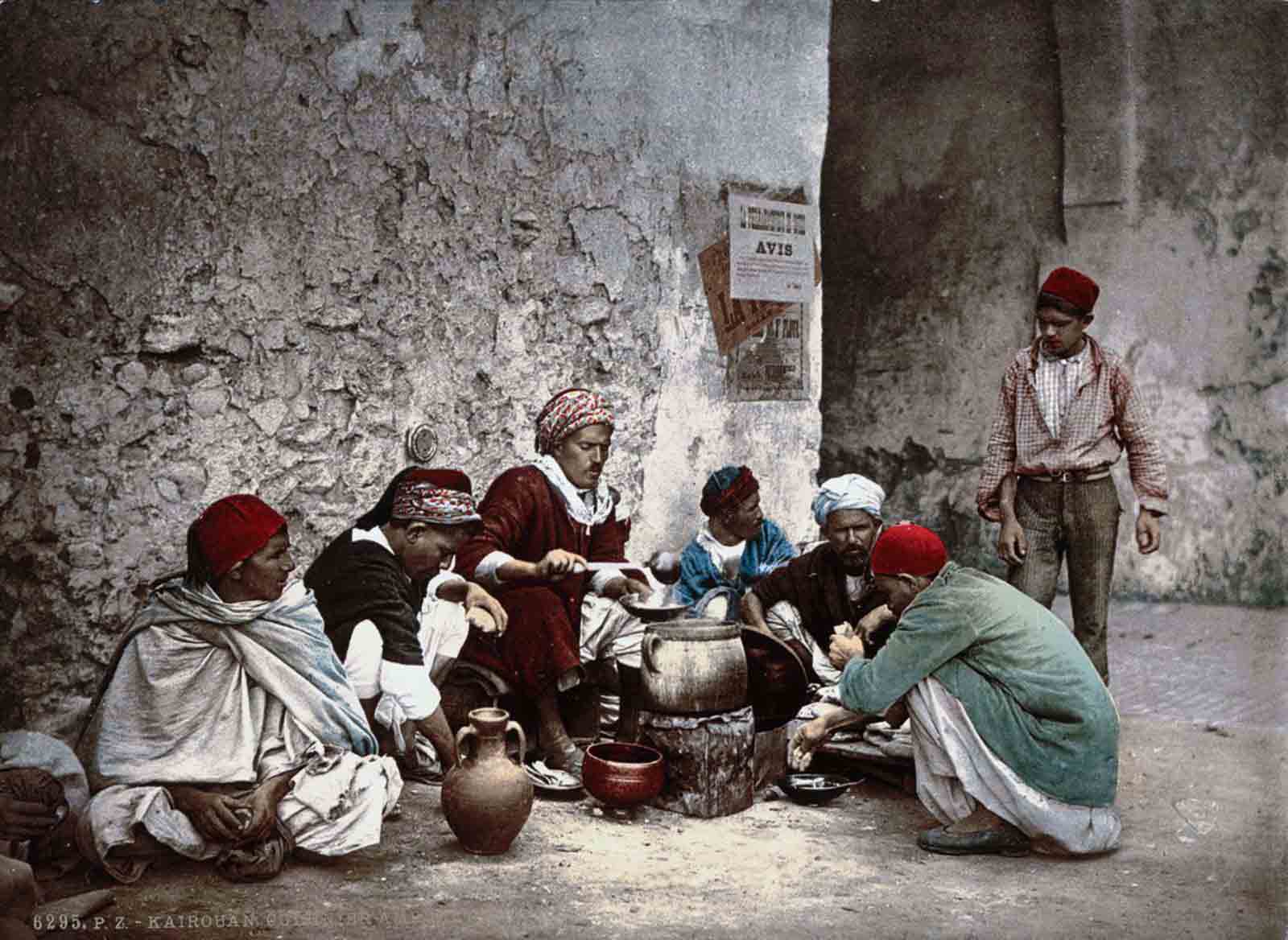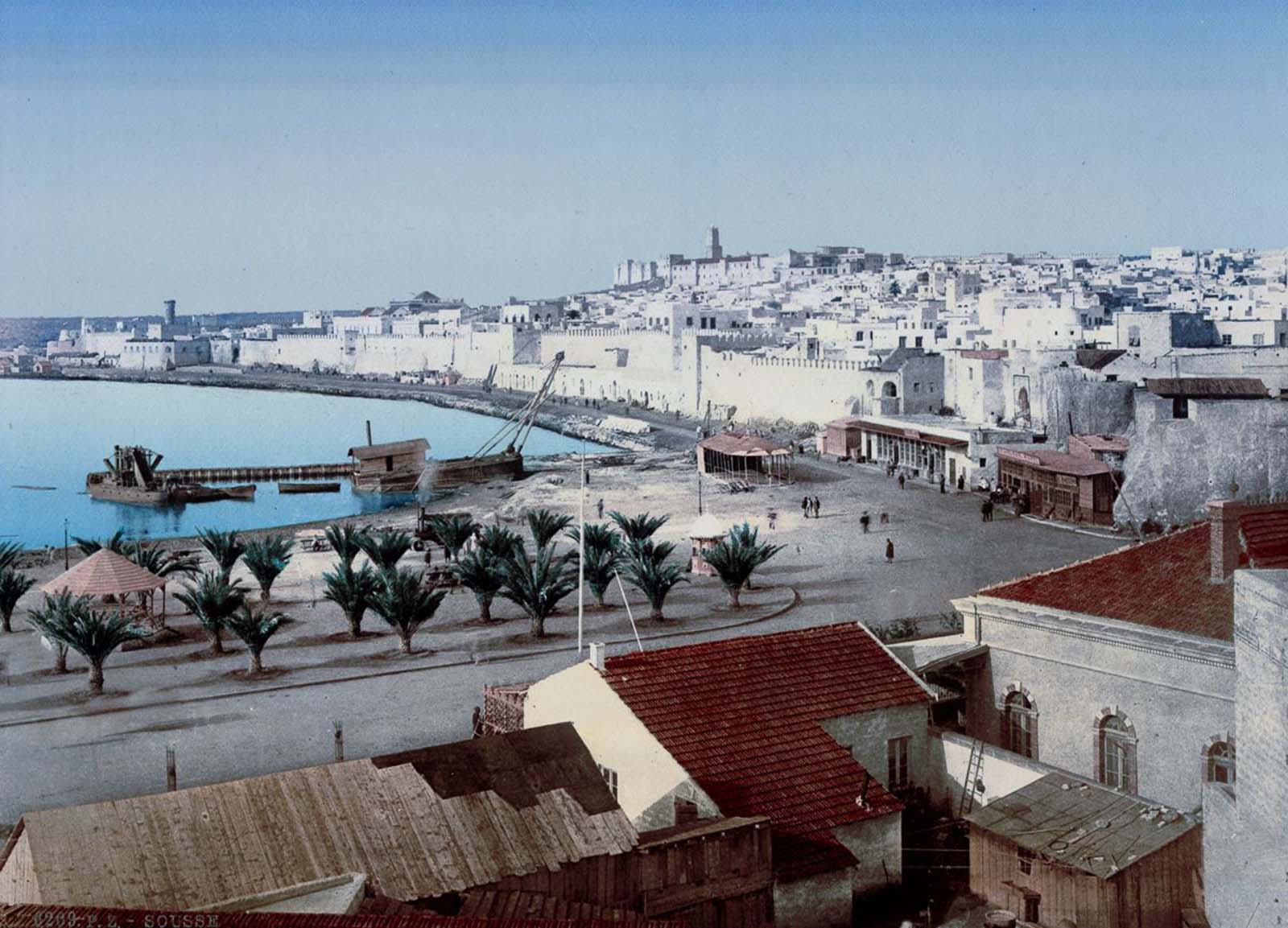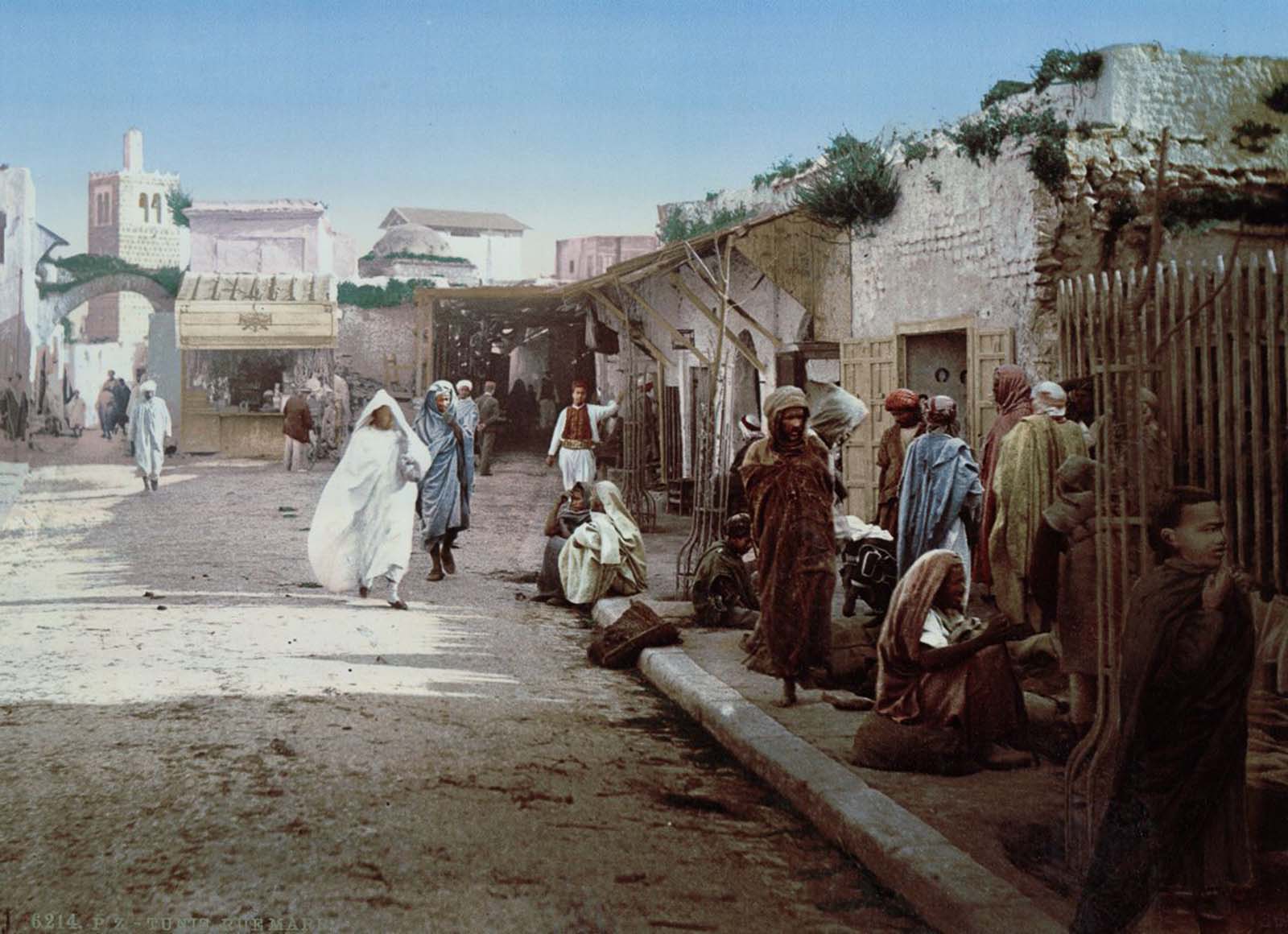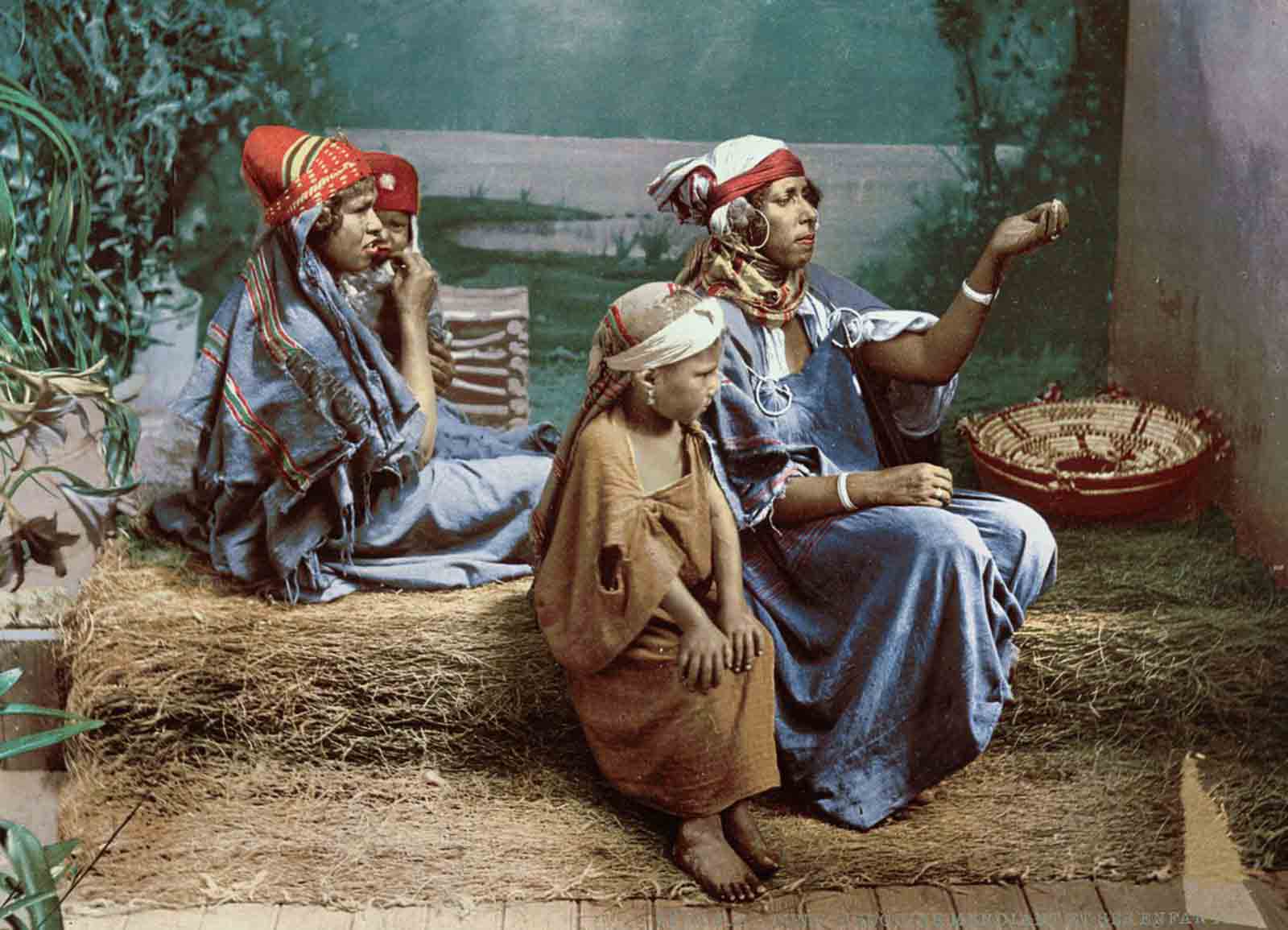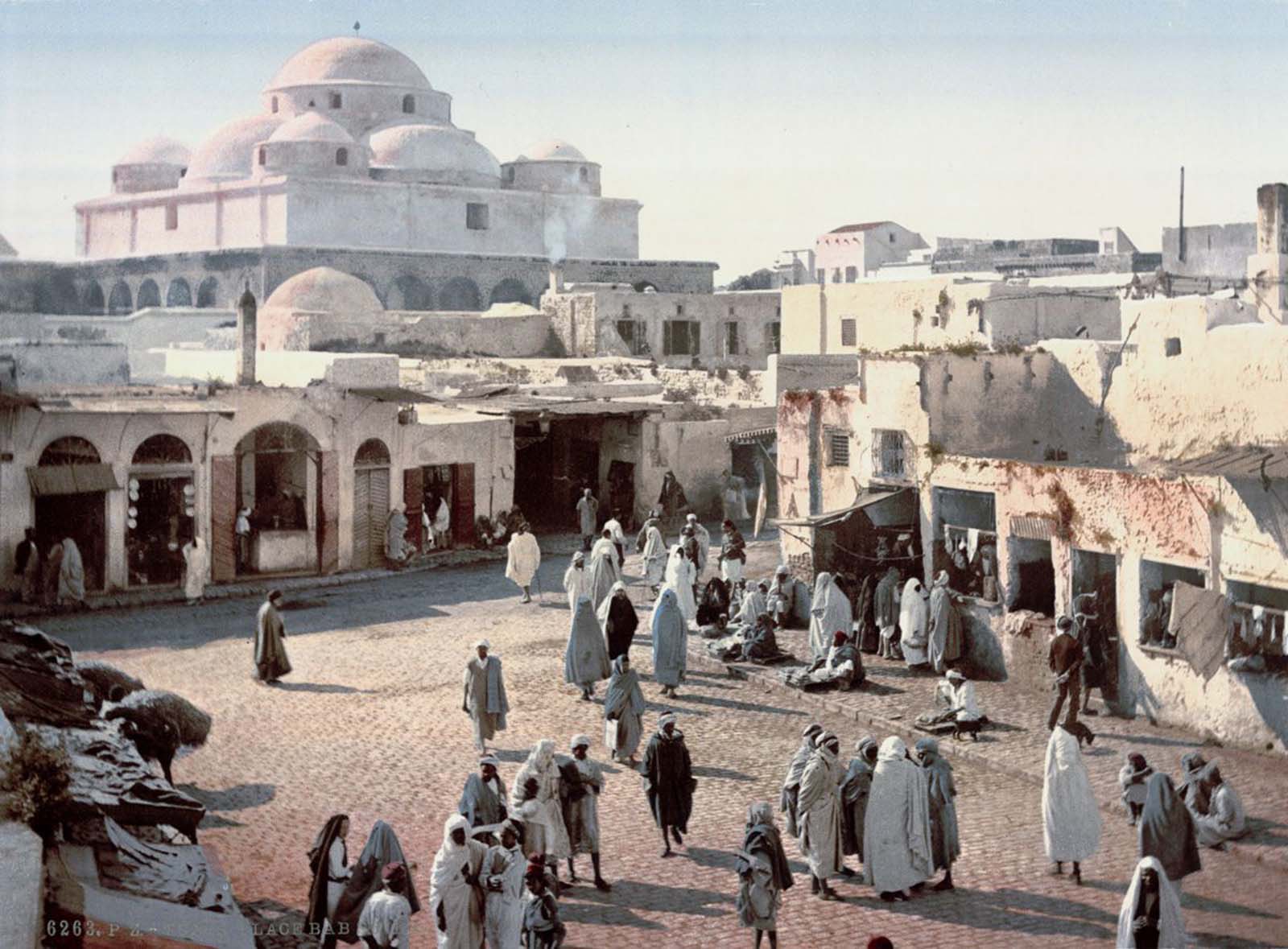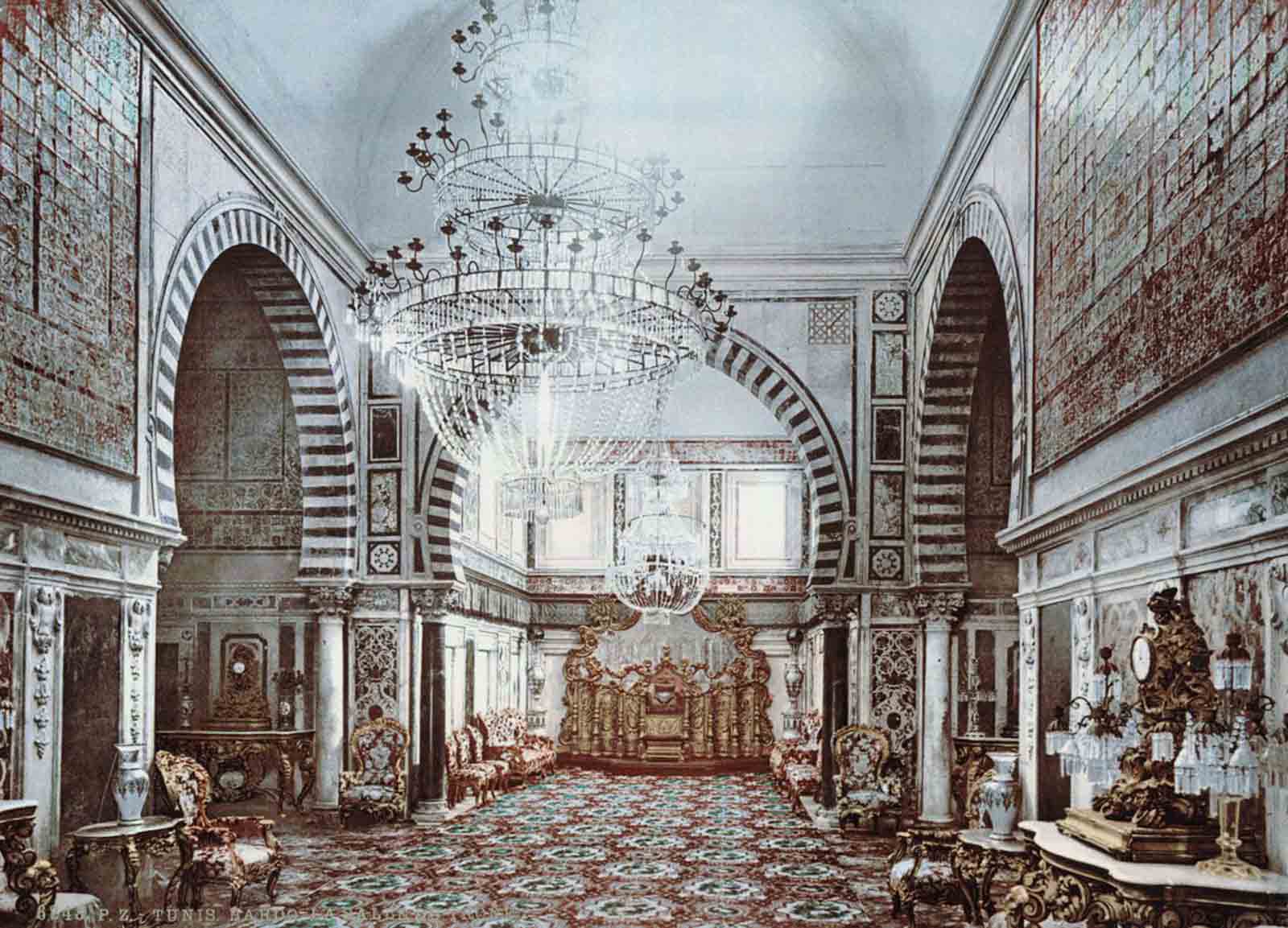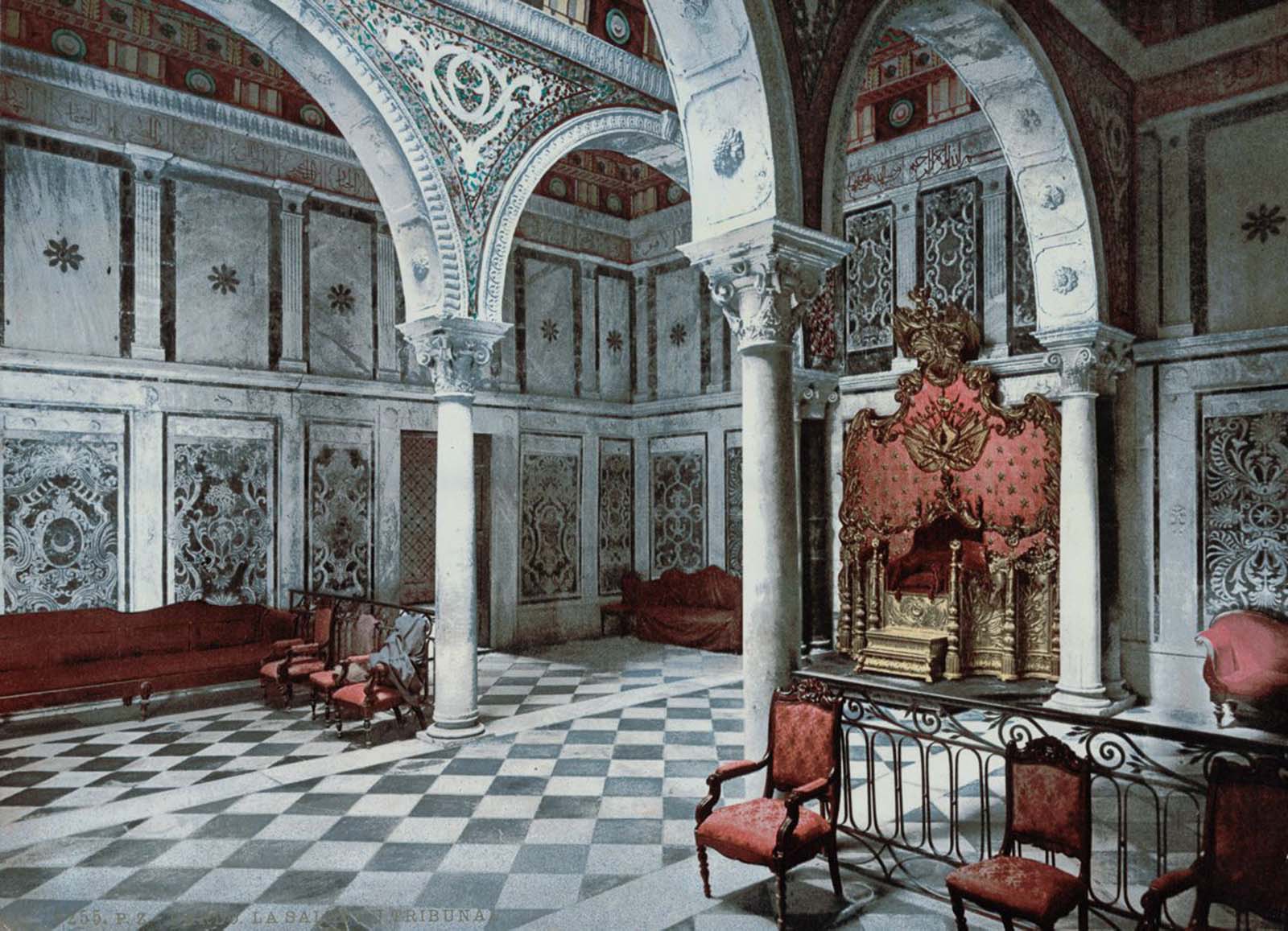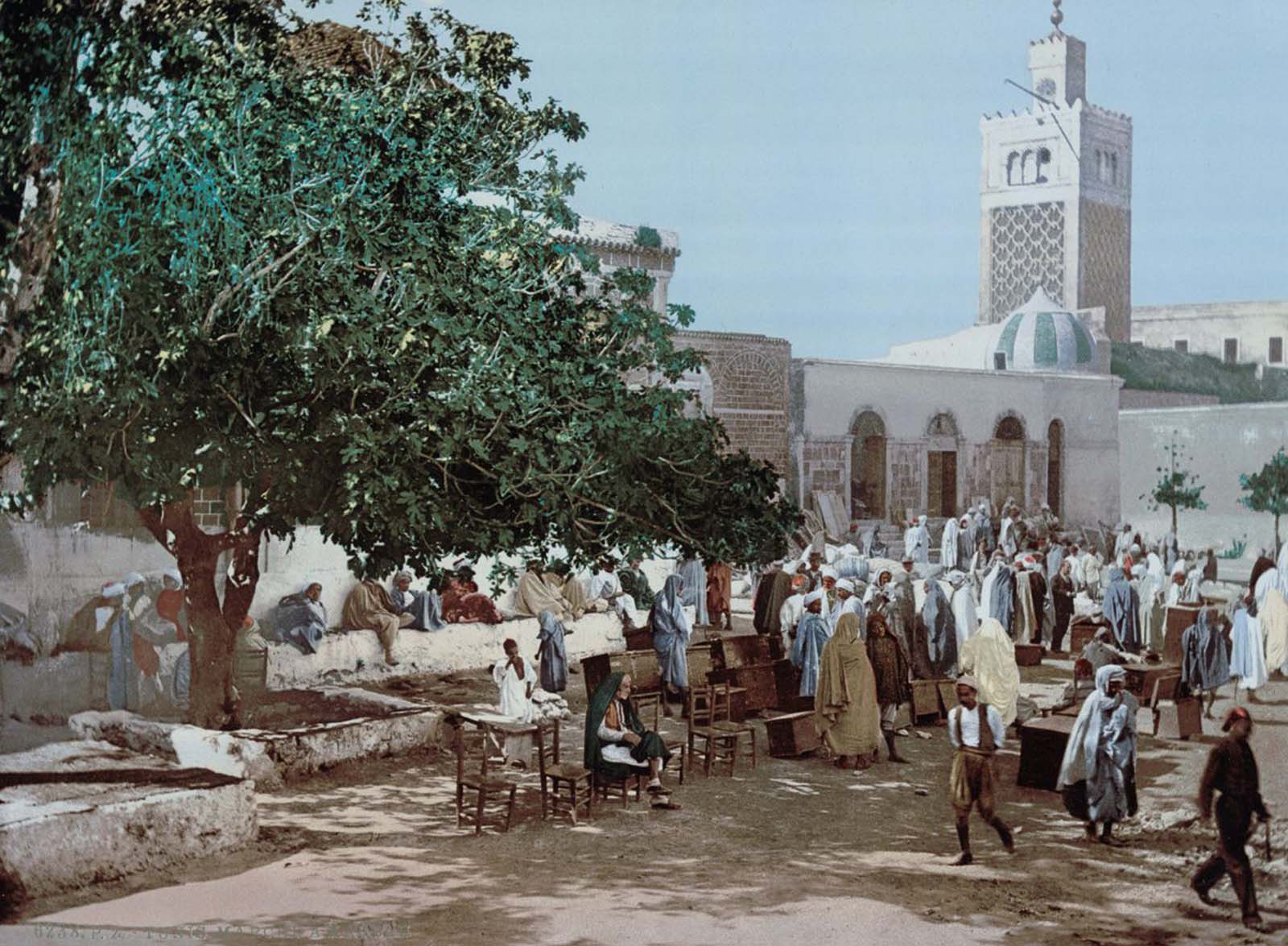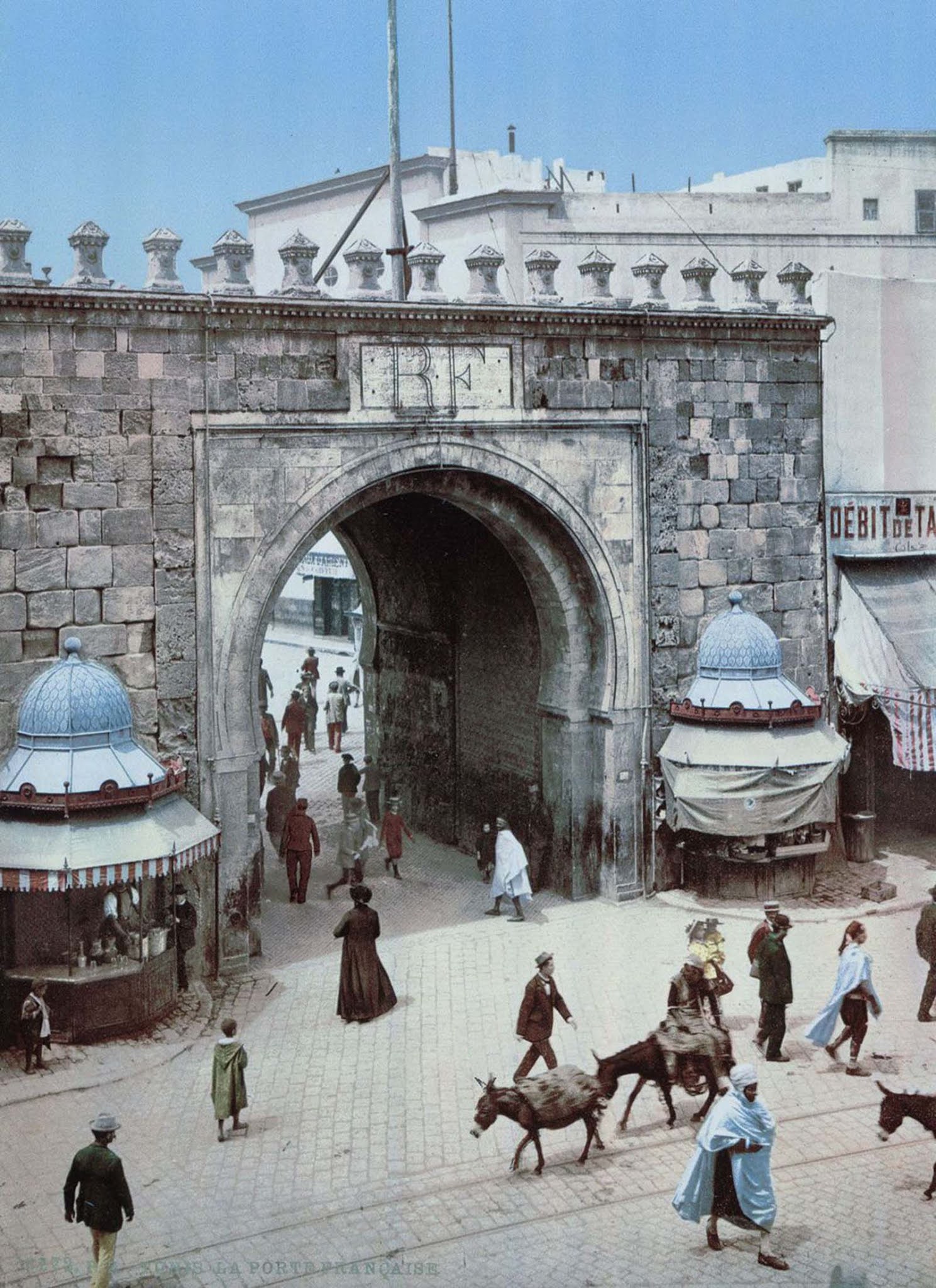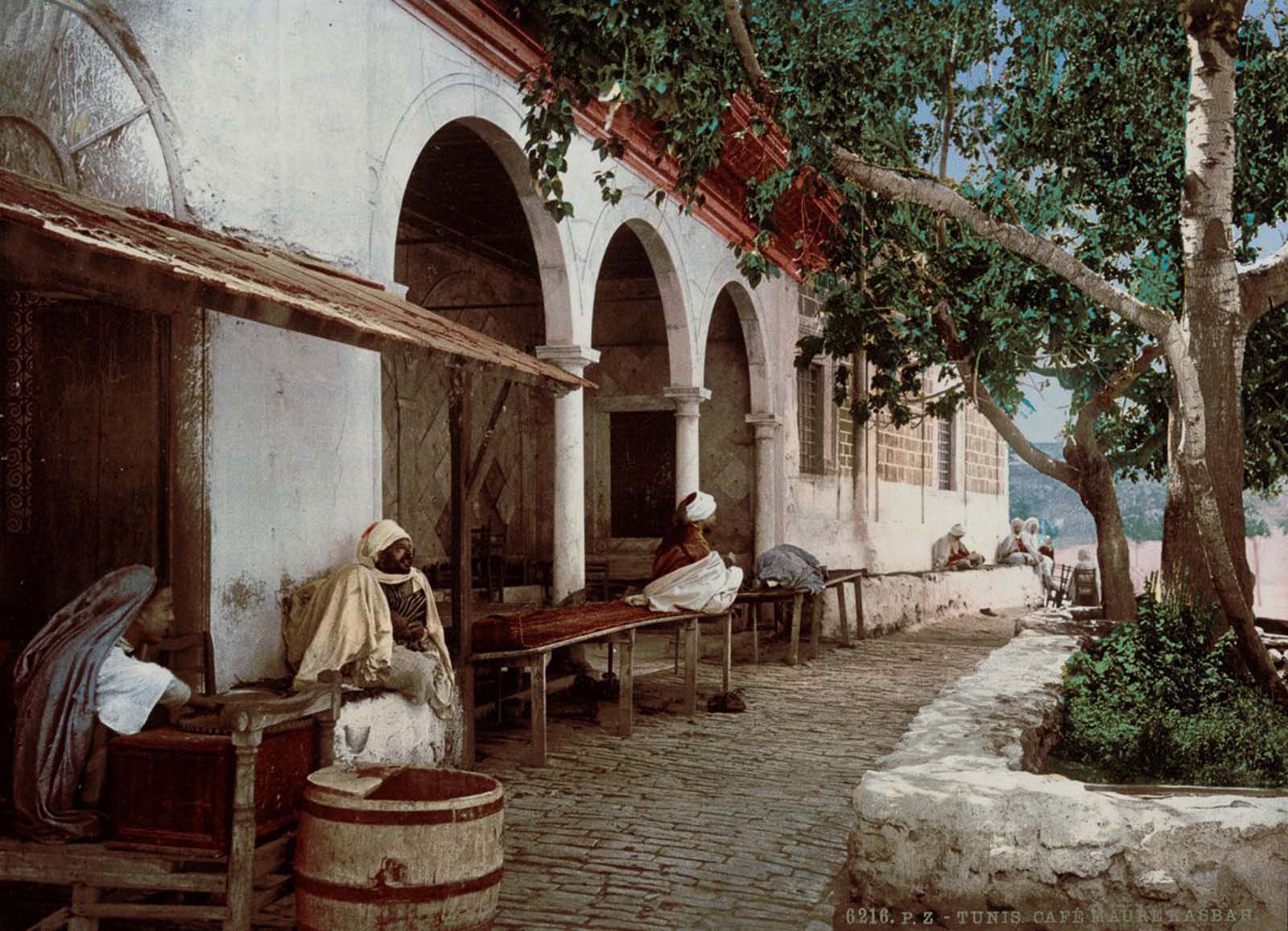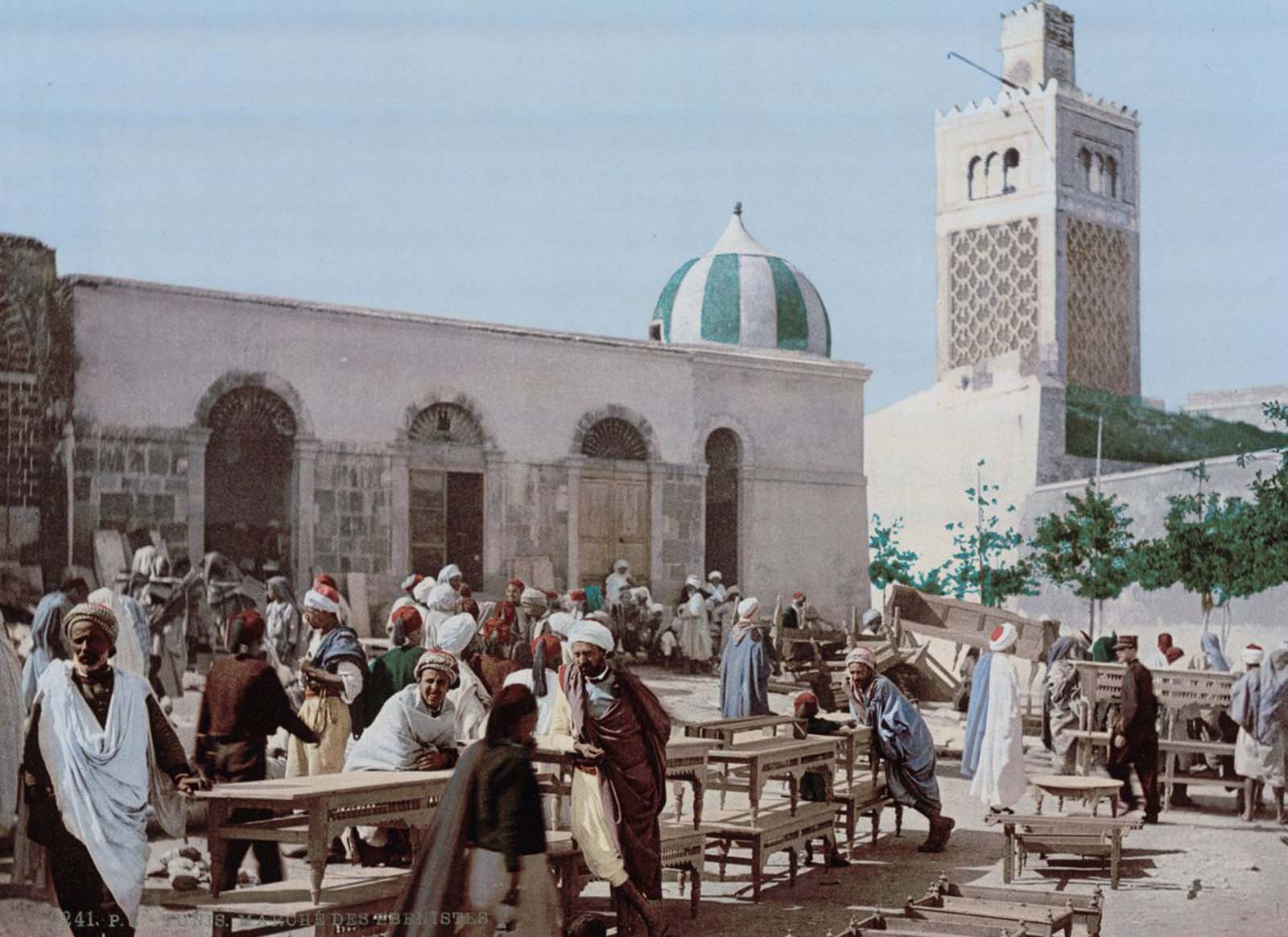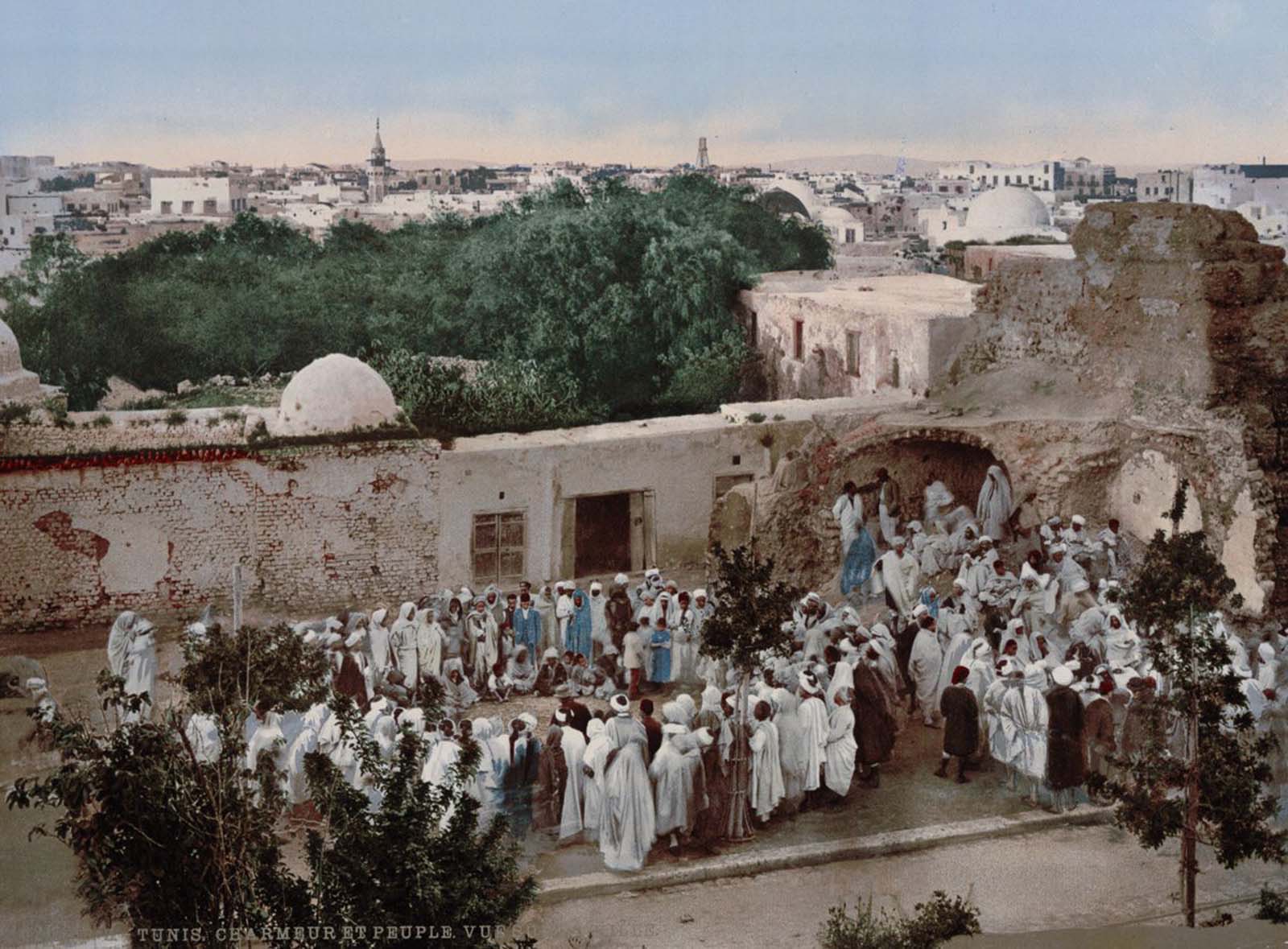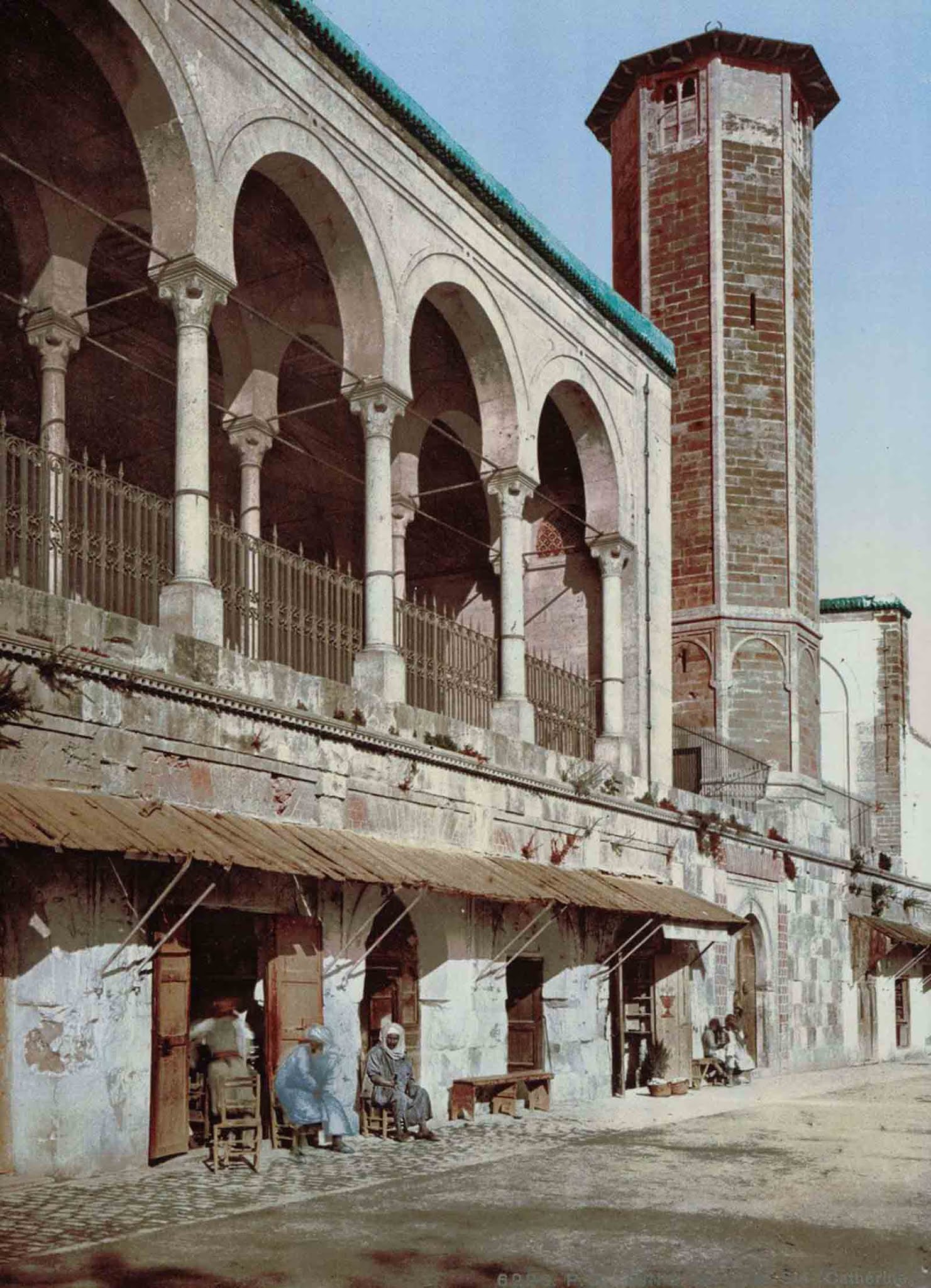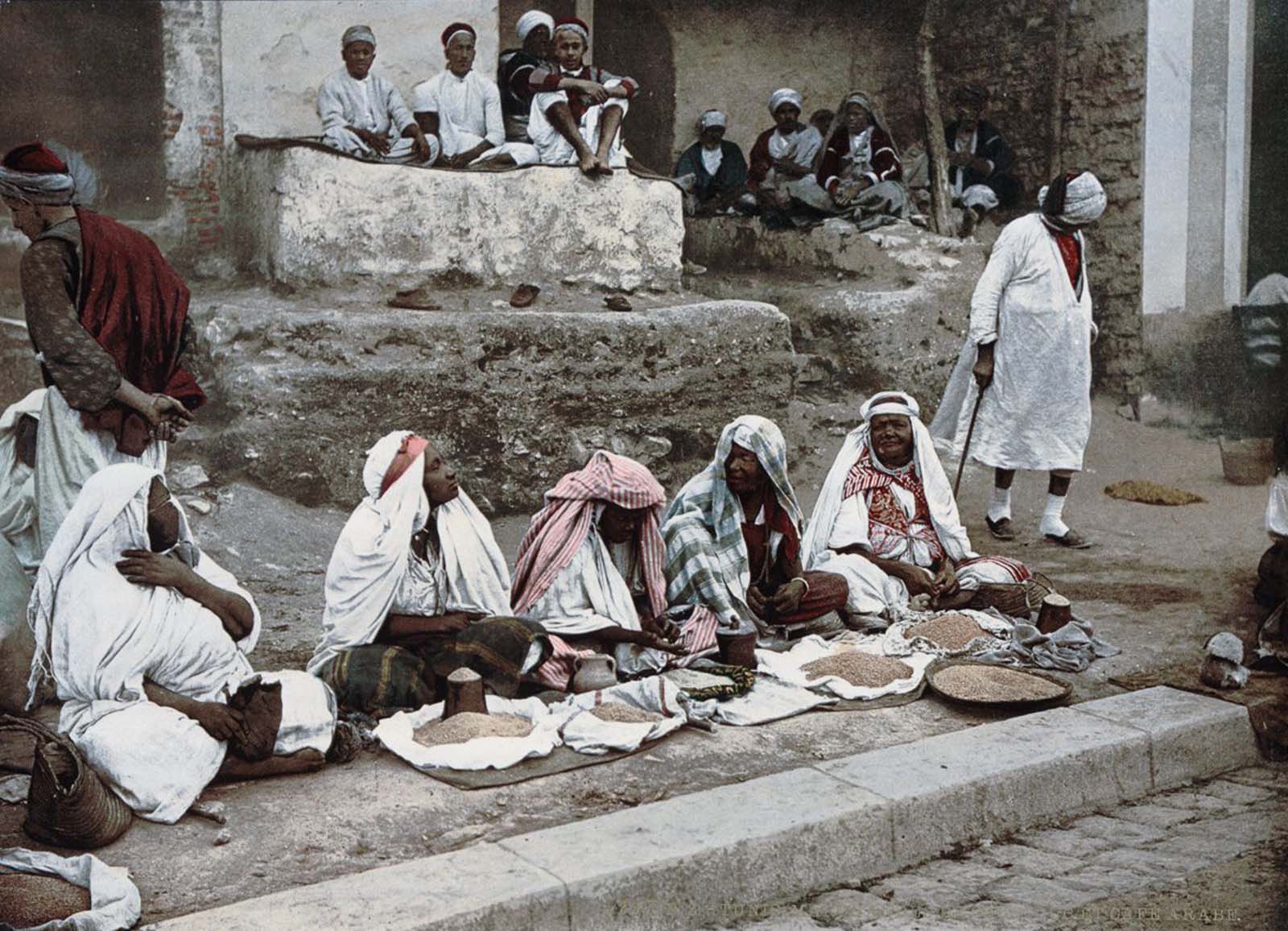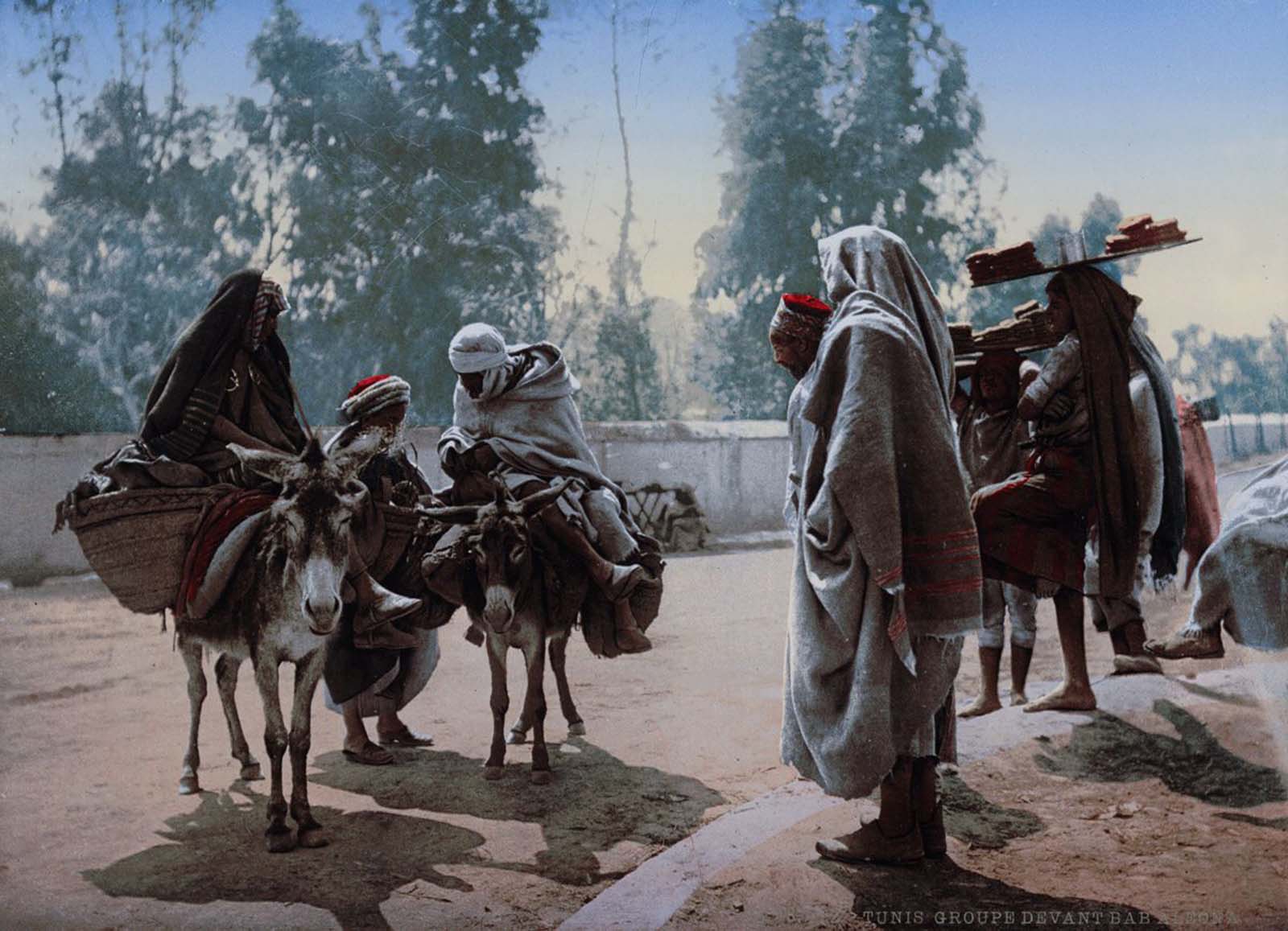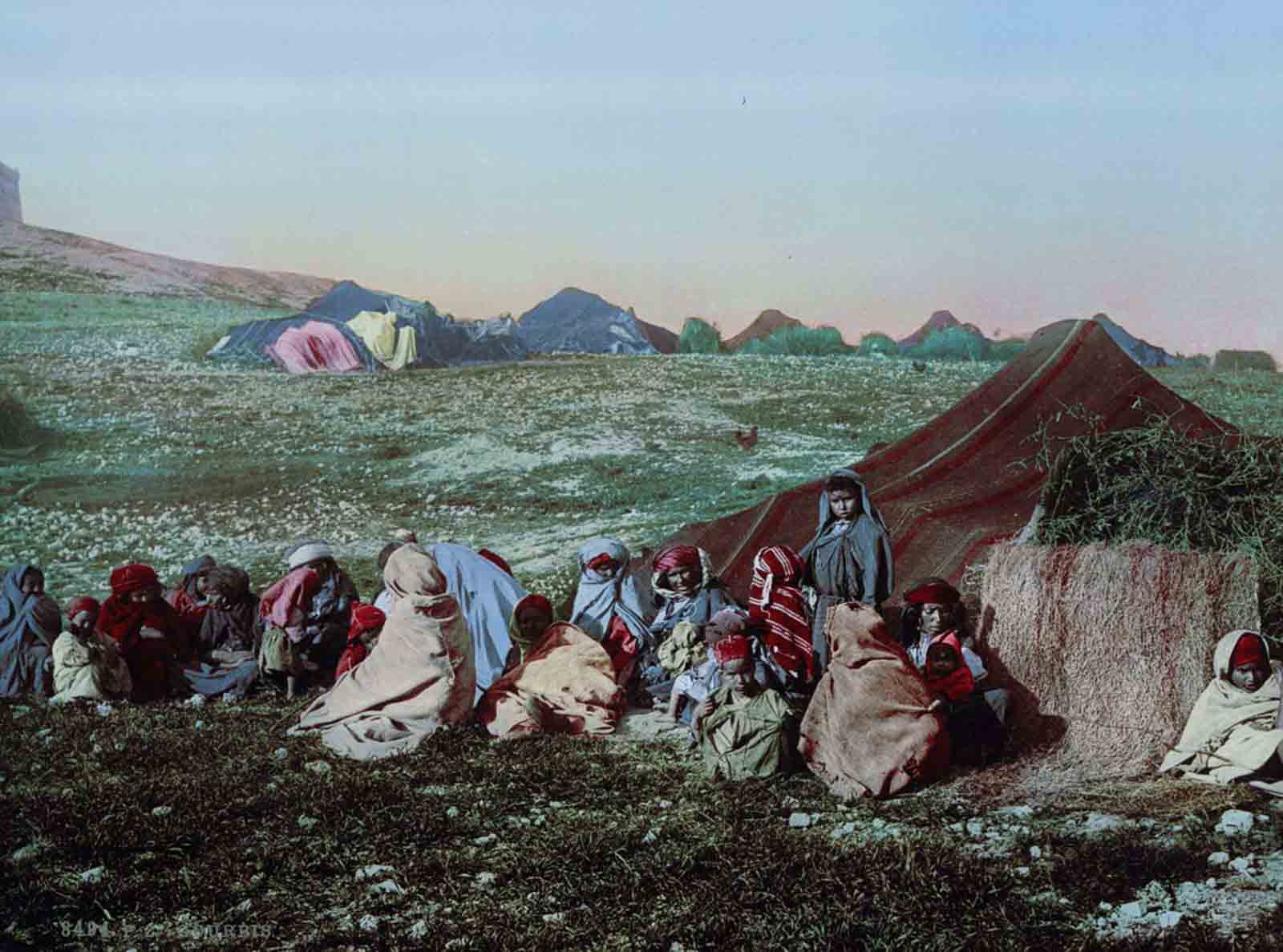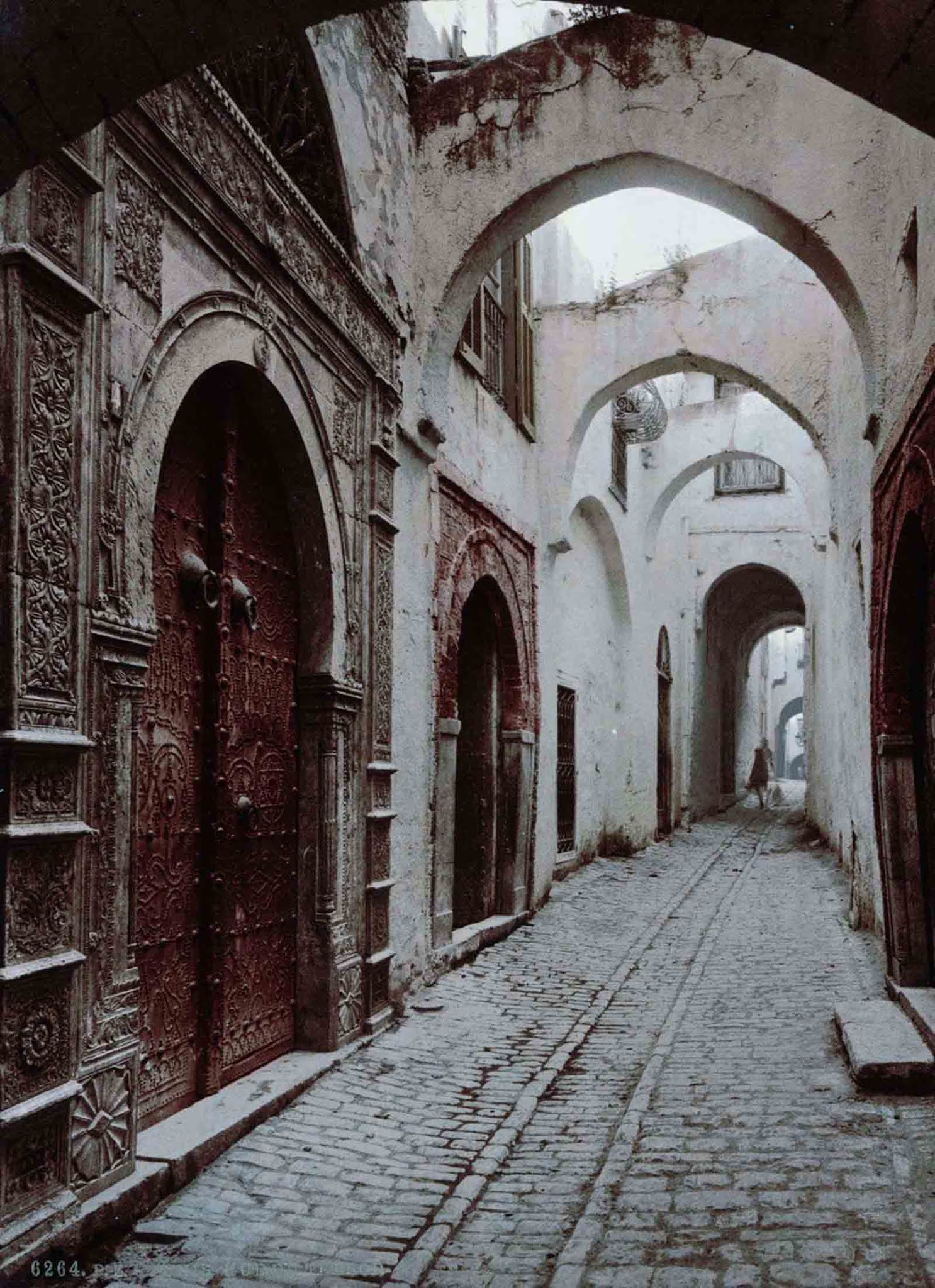During this time Tunisia was occupied by the French in 1881 and administered as a protectorate in which the nominal authority of local government was recognized. Europeans at one time made up half the population in Tunis. Rapid redevelopment of the city occurred as the French-built new boulevards, neighborhoods, and infrastructure and the city became divided into a traditional Arab-populated medina and a new quarter populated by immigrants. The postcards show touches of French influence, with the nearly finished Cathedral of St. Louis appearing in the background of one image. This Roman Catholic cathedral, built in a Byzantine-Moorish style, required the permission of the Bey of Tunis for the French console to begin construction. Other images show the opulent quarters of the Tunisian monarchy, a stark contrast to the pared-down, yet vibrant, street life depicted. People gather at markets and cafes or attend mosques. Bedouin nomads set up camp and a traveling cook sells his wares on the street. The photochrom process was exacting, slow, meticulous, and its results could be breathtaking, or maybe banal, or even ghastly. The skill of the photographer mattered, but the success of the color print depended more on the skill of the artisans creating the intermediates by which the photochroms were worked up. Much also depended on the availability of detailed information about the original coloration of the scene that was photographed. The man behind the camera had to name the colors present in his subject, record them accurately, and give enough context so that production workers could recreate what the photographer saw. On occasions when they lacked sufficient information the workers used their own judgment and sometimes, no matter what the photographer wrote, they gave color values and shadings that seemed right to them. Frequently they worked from hand-colored versions of black and white prints and the artists who did the coloring might themselves use artistic license to make what seemed to them to be an appealing result. The photochroms themselves could be mass-printed as inexpensive postcards (and in that time of penny-stamped cards millions of them were) or they could be produced as large high-resolution prints. (Photo credit: Library of Congress). Notify me of new posts by email.
Δ Subscribe
